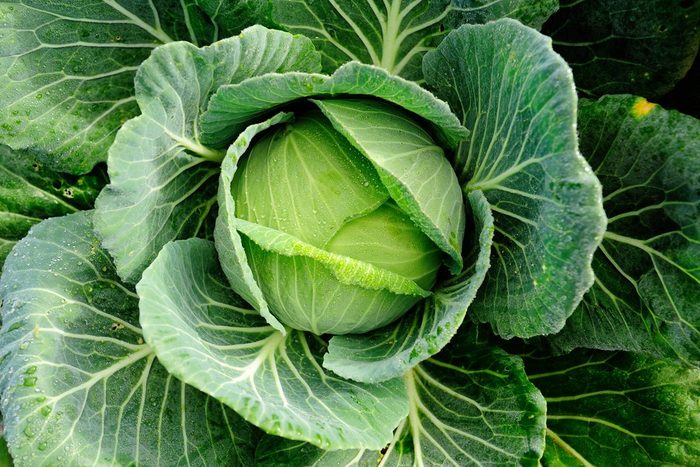Is Cabbage Good for You?

You'd be surprised at the nutritional punch cabbage packs.
For centuries, Russian peasants sustained themselves on this leafy veggie, which helps answer the question of whether cabbage is good for you. That’s why even if your fridge is full of other foods, you should still consider eating cabbage. It’s very low in calories (just 16 calories per 1/2 cup cooked) and high in fibre. Together, these two attributes spell weight loss, which should benefit your blood sugar. Add to that the fact that cabbage is way low on the glycemic index—a measure of how quickly a food raises blood sugar—and you’ve got a healthy winner. Eating cabbage doesn’t mean spooning up a pale stew, either: If you prepare it right, cabbage is not only good for you, but it can be a culinary delight.
(Related: The Cabbage Soup Diet Can Help You Lose a Ton of Weight—But Is It Safe?)
Chockful of nutrients
This veggie doesn’t just help you lose weight. Cabbage (especially red cabbage) is also a surprisingly excellent source of vitamin C, which some experts believe may reduce the risk of developing type 2 diabetes. Red cabbage offers another bonus: It’s rich in natural pigments called anthocyanins, which new research suggests may help boost insulin production and lower blood sugar levels.
Finally, cabbage is often prepared with vinegar, which can help lower the GL of your whole meal.
Cancer fighter
Cabbage contains sulforaphane, which has potent anti-cancer properties. One study of women found that those who ate the most cabbage and its cruciferous cousins, like broccoli and Brussels sprouts, had a 45 percent lower breast cancer risk than women who ate the least.
Cabbage may also help guard against lung cancer. Fermented cabbage, a.k.a. sauerkraut, may have even higher levels of anticancer compounds, a result of the fermentation process. Just beware of sauerkraut’s high sodium content; rinse it before heating.
Don’t overcook it
Overcook cabbage, and you’ll regret it when the smell lingers. Overcooking also destroys cabbage’s stores of vitamin C, which can’t stand the heat. Steam cabbage until limp, stir-fry it quickly, or chop it raw for salads and slaws. Older cabbage or cabbage that’s been in the fridge for a while may have a stronger smell. To minimize the odor, cook the cabbage quickly in an uncovered pan with as little water as possible. Try adding a tablespoon of vinegar to the cooking water to further cut the odor.
Perfect portion: 1/2 cup
A serving is 1/2 cup of cooked cabbage (1 cup raw), but consider the sky the limit.
Menu magic
- Enjoy cabbage in coleslaw.
- Add sliced or chopped cabbage to soups and stews.
- Place sautéed cabbage underneath a small serving of steak to add gourmet appeal.
- Braise red cabbage with chopped apples, walnuts, and red wine.
- Sauté cabbage and onions to serve as a side dish.
- Use shredded cabbage in place of lettuce on sandwiches and burgers.
- Combine cooked shredded cabbage with low-fat sour cream and caraway seed, then heat and serve as a side dish.
- Wrap thick fish fillets in cabbage leaves and steam over seasoned broth.
Now that you know cabbage is good for you, learn how to make the healthiest slow-cooker quinoa cabbage rolls.




